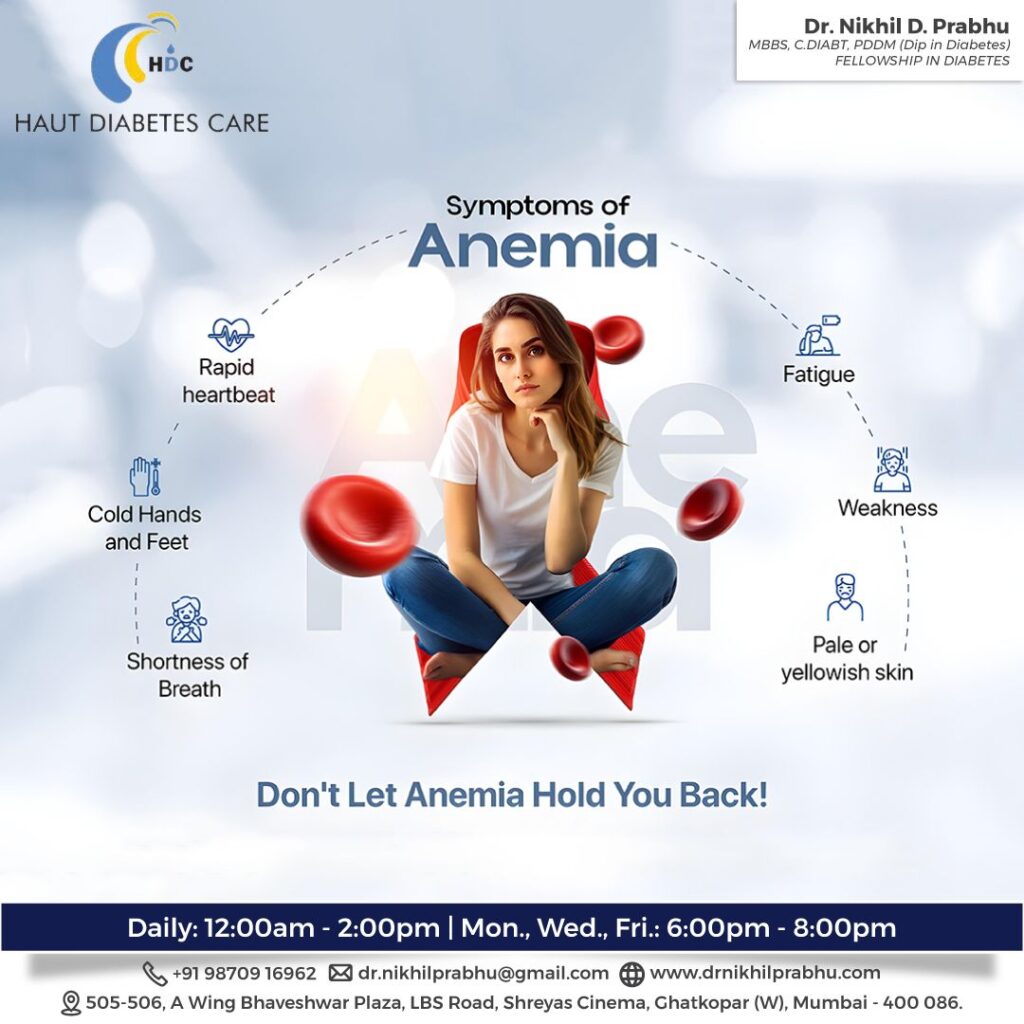Symptoms of Anemia
- Fatigue and Weakness: The most common symptom, as the body isn’t getting enough oxygen.
- Pale Skin: Often seen in more severe cases due to reduced hemoglobin.
- Shortness of Breath: Especially during physical activities.
- Dizziness or Lightheadedness: Due to lack of oxygen to the brain.
- Cold Hands and Feet: Caused by poor circulation and reduced oxygenation.
- Heart Palpitations or Rapid Heartbeat: The heart works harder to circulate oxygen.
- Headaches: Often linked to low oxygen levels.
- Brittle Nails and Hair Loss: A sign of nutritional deficiencies.
- Chest Pain: In severe cases, where the heart is overworked.
Treatment of Anemia
Treatment depends on the type and underlying cause:
- Iron-Deficiency Anemia:
- Iron Supplements: Oral iron supplements are commonly prescribed.
- Diet: Include iron-rich foods like red meat, poultry, fish, beans, and leafy green vegetables.
- Vitamin C: Helps improve iron absorption, so foods high in vitamin C (like citrus fruits) are beneficial.
- Vitamin B12 Deficiency:
- B12 Supplements: Can be taken orally or via injections if there’s an absorption issue.
- Diet: Increase intake of B12-rich foods like meat, dairy, and eggs.
- Folate-Deficiency Anemia:
- Folic Acid Supplements: Usually taken orally.
- Diet: Include folate-rich foods like green leafy vegetables, fruits, nuts, and fortified grains.
- Other Types and Causes:
- If due to chronic diseases (like kidney disease or cancer), treating the underlying condition is essential.
- Blood transfusions or medications to stimulate red blood cell production may be recommended in severe cases.
Additional Lifestyle and Dietary Tips
- Avoid High-Calcium Foods with Iron: Calcium can interfere with iron absorption if taken together.
- Limit Caffeine: Reduces iron absorption from foods.
- Hydration and Regular Exercise: Improve circulation and help manage symptoms.
Consulting with a healthcare provider is essential for proper diagnosis and treatment, as anemia has various causes and requires tailored treatment.
Dr. Nikhil Prabhu ( Diabetes Specialist )
Dr Nikhil Prabhu is a consultant Diabetologist from mumbai. he has been practicing for more than 10 years and currently over 7000 patients are under his treatment for diabetes and thyroid disorder from mumbai and navi mumbai area. | you can book his appointment for tele-consultation on 9082523295 | follow us on YouTube for more diabetes & health related tips










